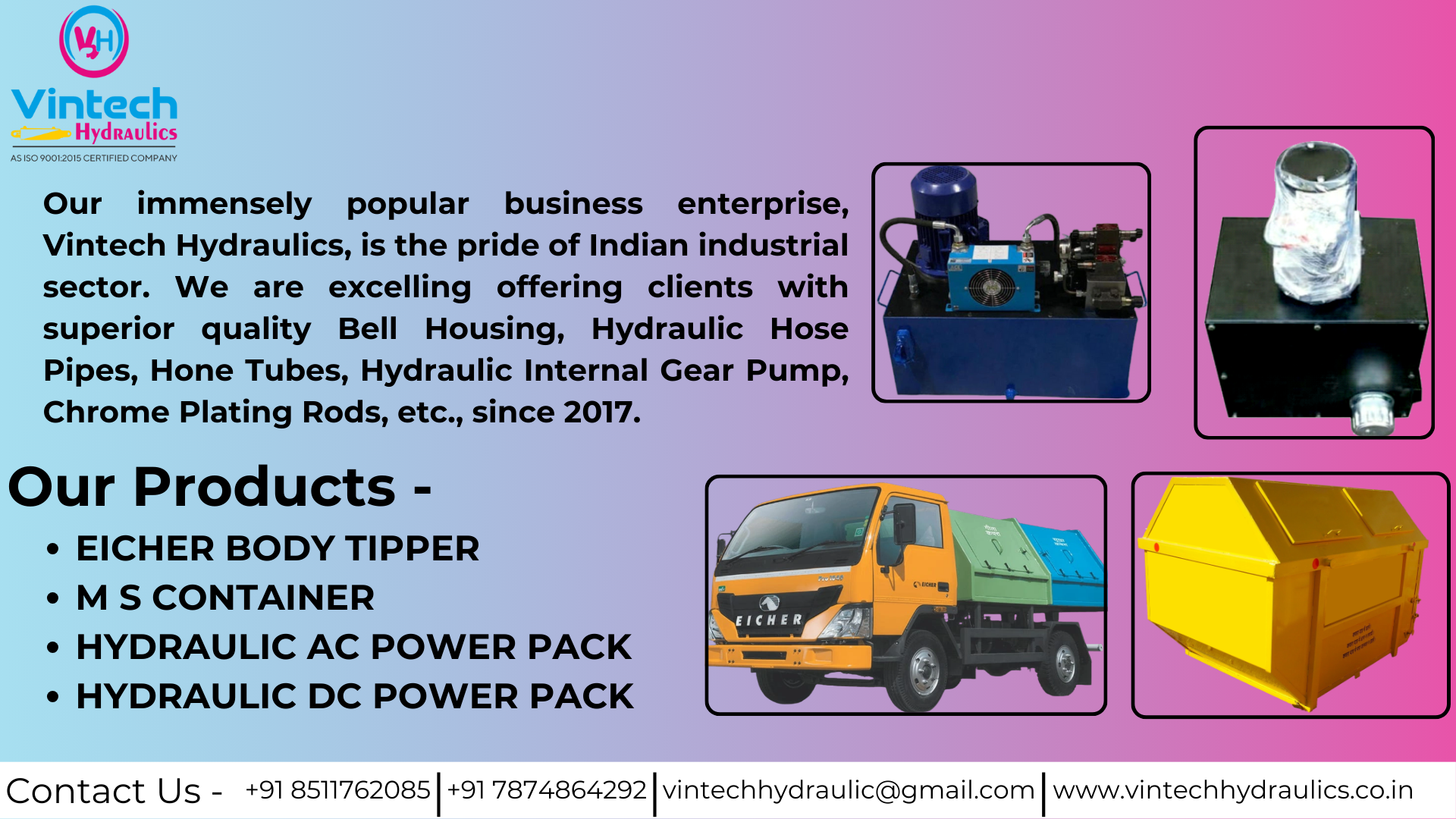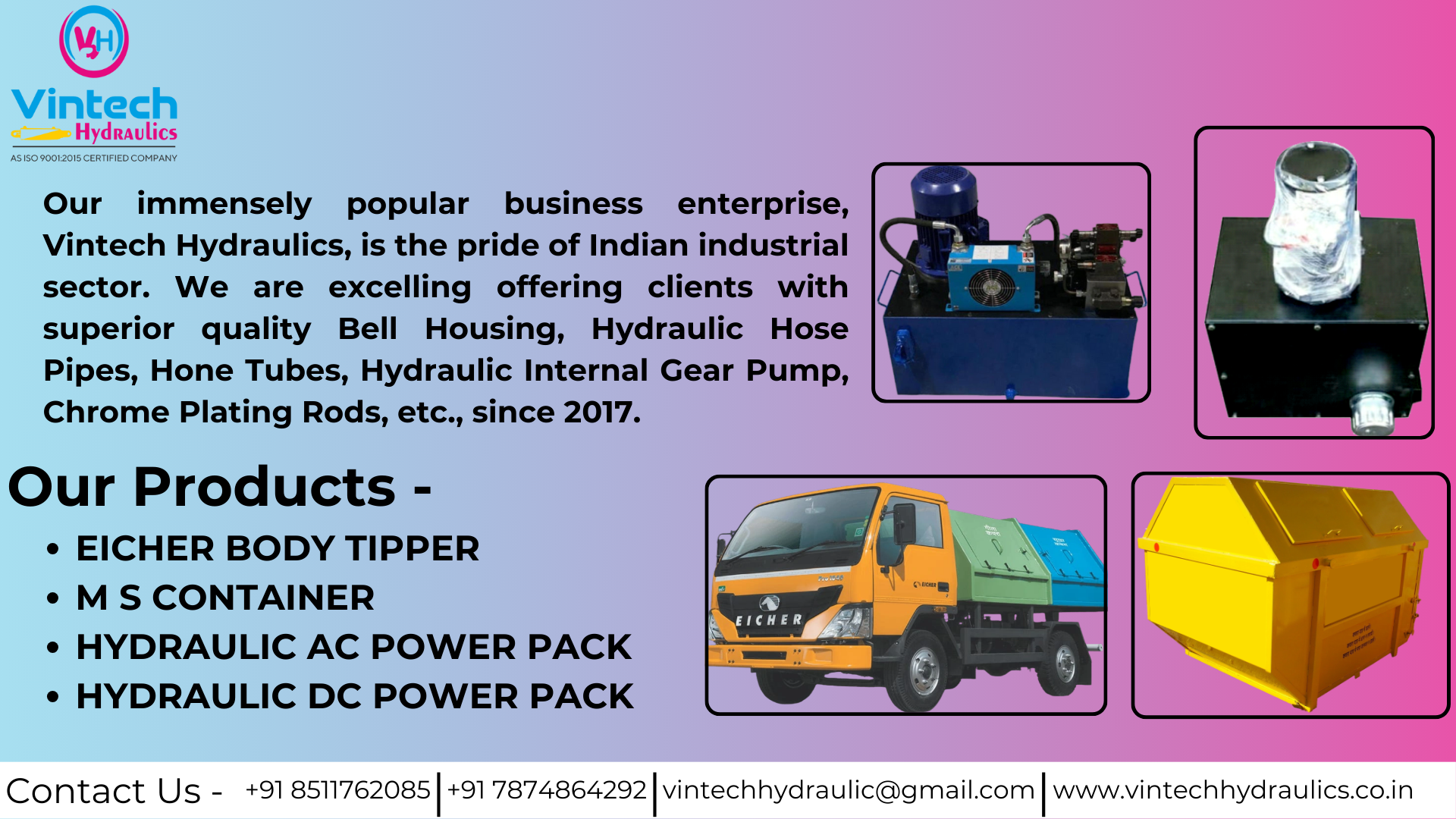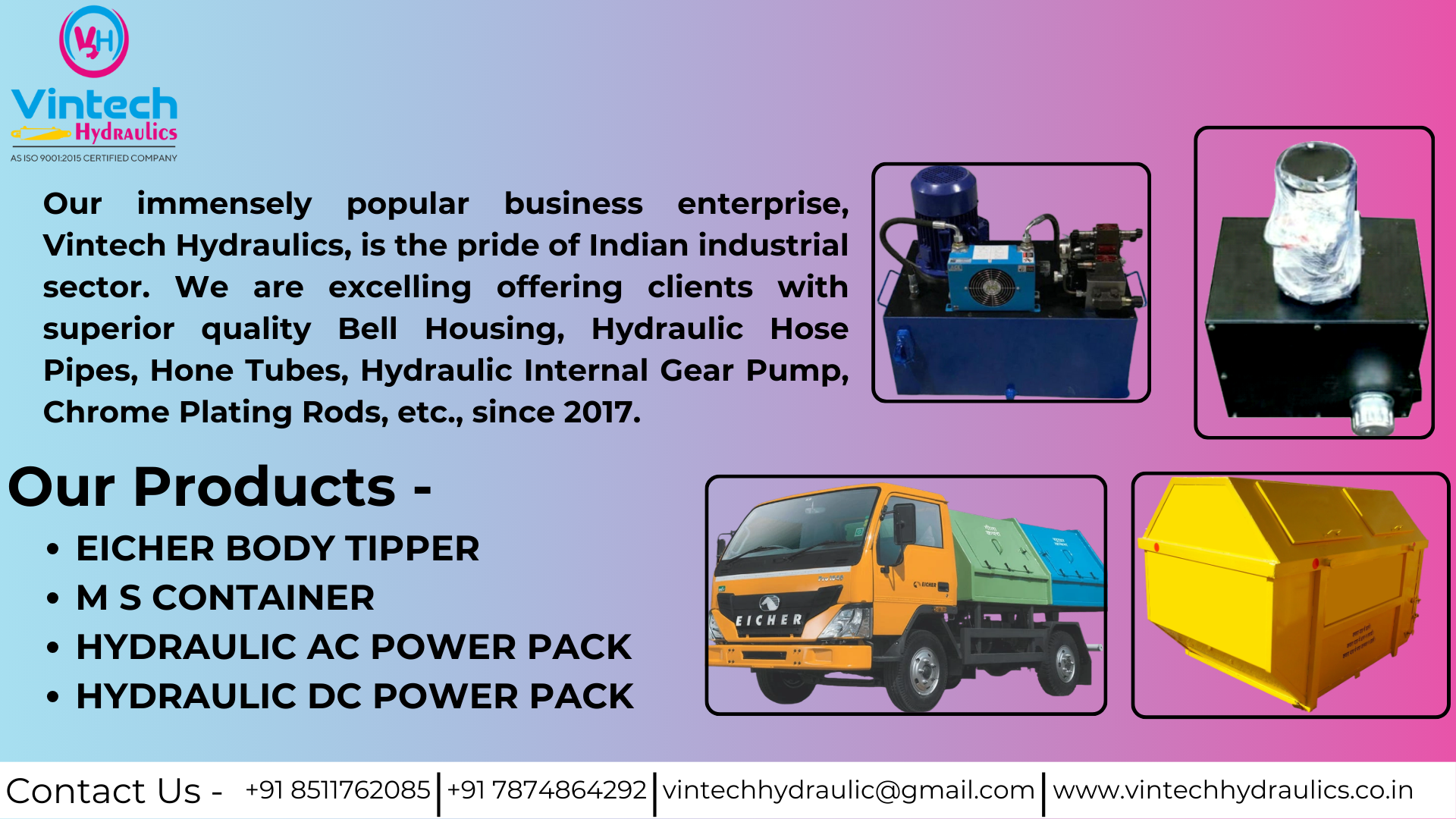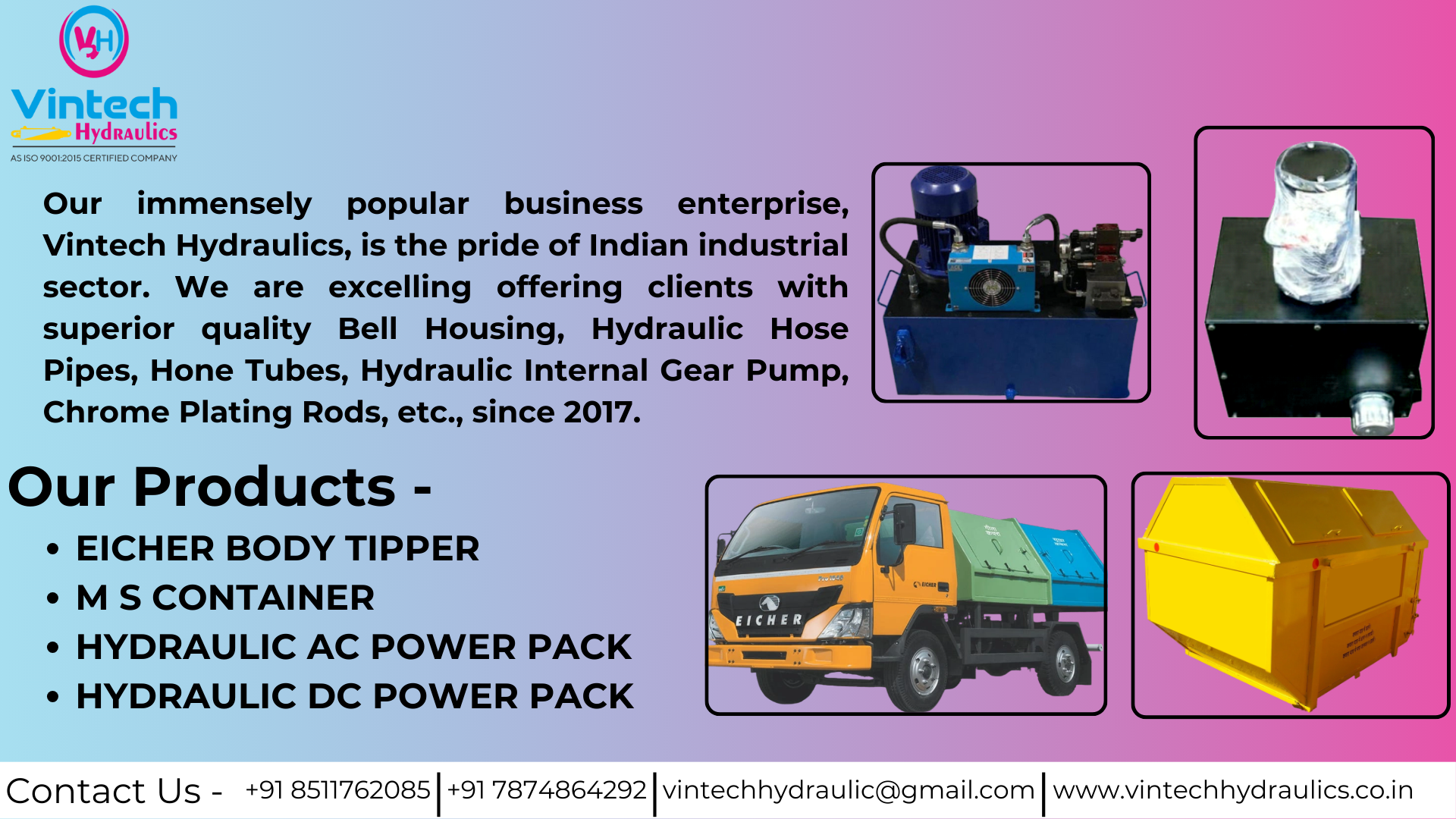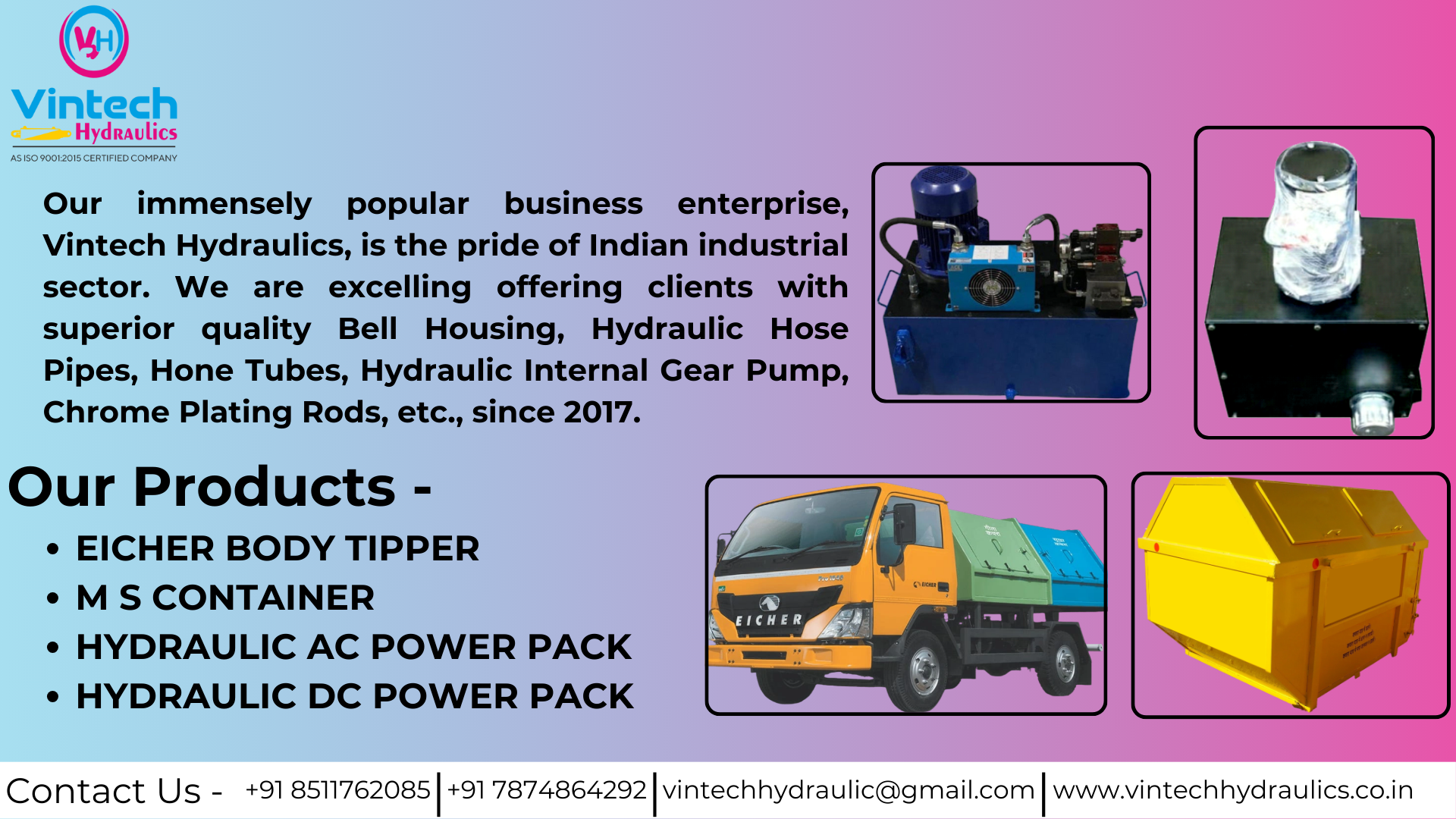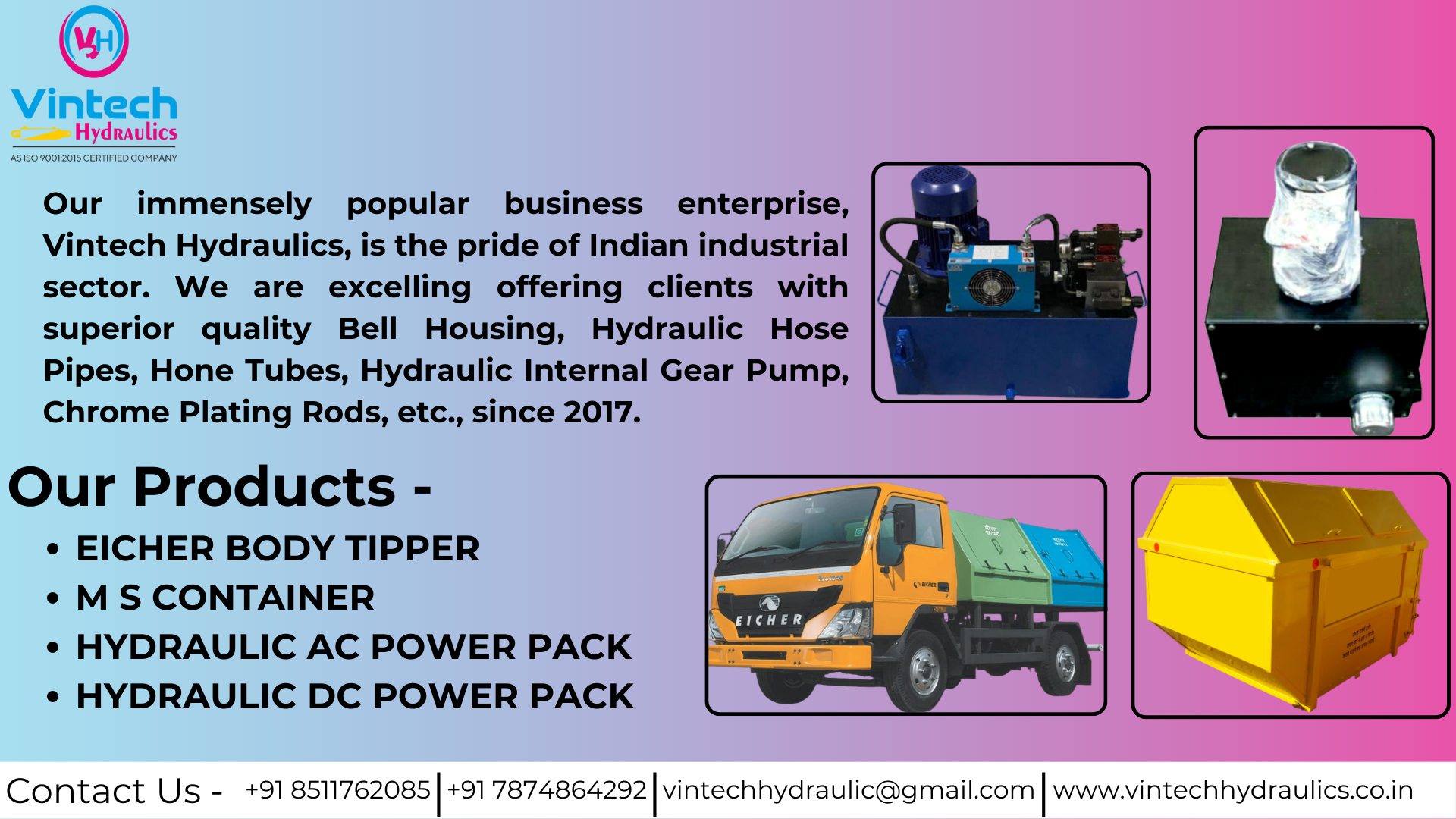
Hydraulic Cylinder
Hydraulic Cylinder – Overview
Hydraulic cylinders power linear motion across India’s construction, mining, agriculture, logistics, and manufacturing sectors. By converting fluid energy into controlled force, they lift, press, clamp, steer, and position loads with repeatable precision. Selection focuses on bore, stroke, duty cycle, mounting, sealing technology, cushions, and serviceability. Local engineering enables faster customization, spares, and commissioning support for harsh operating environments. For specifications, application guidance, and service support, visit Vintech Hydraulics.
Pressurized fluid enters the cylinder barrel, acting on a sealed piston to create linear motion. Piston-rod movement is guided by bearings, while wipers exclude contaminants and high-performance seals retain pressure. Flow-control valves manage speed; relief valves protect against overloads. End-cushions decelerate strokes to reduce shock and noise. Correct filtration, fluid viscosity, and alignment extend service life across demanding Indian duty cycles. Learn more at Vintech Hydraulics.
- modular construction, easy maintenance, economical for presses, fixtures, and factory automation across varied Indian industries.
- compact, durable design for mobile equipment; ideal where envelope size and ruggedness are critical in the field.
- multi-stage extension enabling very long strokes for dumpers, tippers, refuse compactors, and lifting platforms.
- provide force in extension and retraction; suited for presses, manipulators, and synchronized motion systems.
- powered in one direction with spring or load return; simple, reliable solutions for jacks and lifts.
- Heavy-duty seamless tubes with precision honing for optimal seal performance and extended service life.
- Chrome-plated, induction-hardened rods resisting corrosion, scoring, side-load wear, and pitting in harsh environments.
- High-performance seals and wipers limiting leakage, contamination ingress, and unscheduled maintenance downtime.
- Customizable bore, stroke, mounts, ports, cushions, and sensors to match application-specific requirements.
- Every assembly pressure-tested, with traceable materials and ISO-compliant quality documentation provided.
- Construction machinery uses hydraulic cylinders in booms, buckets, stabilizers, and steering to lift, tilt, clamp, and stabilize heavy loads, improving cycle times, operator safety, and productivity on infrastructure, mining, and road projects nationwide.
- Manufacturing presses, injection molding, bending, and forming systems rely on cylinders to deliver controlled force and precise positioning, enabling higher throughput, tighter tolerances, better repeatability, and reduced scrap across Indian factories and workshops.
- Material handling and logistics deploy cylinders in forklifts, scissor lifts, dock levelers, grabs, and clamps, enhancing load stability, ergonomic handling, and turnaround speed in warehouses, ports, distribution hubs, and industrial estates across India.
- Agricultural equipment—tractors, harvesters, loaders, and sprayers—use cylinders for lifting, articulation, levelling, and steering, improving field productivity, operator comfort, and implement control in India’s diverse soil, weather, and crop conditions.
- Lower total cost of ownership through rugged construction, standardized seals, and rebuildable designs that reduce unplanned downtime, extend service intervals, and simplify inventory planning for fleets operating in challenging Indian environments.
- Consistent force and precise motion control deliver higher quality parts, safer lifting, and smoother machine cycles, improving throughput, dimensional accuracy, and operator confidence across construction, manufacturing, maintenance, and agricultural applications.
- Custom engineering of bore, stroke, mounts, cushions, and ports ensures exact fitment, easy retrofits, and predictable performance, helping Indian businesses upgrade legacy equipment without expensive redesigns or extended integration delays.
- Enhanced sustainability via longer component life, repairable subassemblies, and proper filtration practices that cut waste, reduce oil consumption, and support environmentally responsible maintenance strategies aligned with evolving Indian regulations.
India hosts a robust ecosystem of hydraulic cylinder manufacturers and distributors serving OEMs and end users across construction, material handling, process, and agriculture. Offerings span tie-rod, welded, telescopic, single-acting, and double-acting designs with custom bore, stroke, mounts, and cushions. Reliable suppliers provide application engineering, quick-turn prototypes, pressure testing, documentation, and nationwide after-sales support. Strong domestic sourcing shortens lead times, simplifies spares management, and ensures responsive service for demanding Indian operating environments and multi-shift duty cycles.
Maintenance and Safety Tips
- Inspect for leaks, scored rods, loose mounts, and misalignment before every shift.
- Maintain fluid cleanliness; change filters and oil per OEM duty-cycle recommendations.
- Lubricate pivots, pins, and bearings; tighten fasteners to specified torque values.
- Verify relief settings and cushioning to prevent end-stroke shock and damage.
- Train crews on lockout–tagout and support loads mechanically before service.
FAQs – Hydraulic Cylinder
Contact Details
Talk to our specialists today for tailored solutions and fast assistance.
